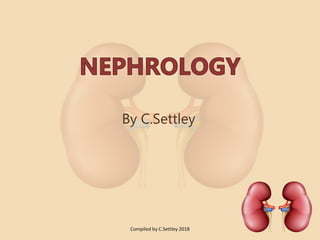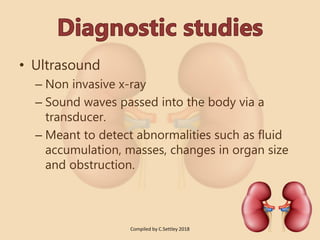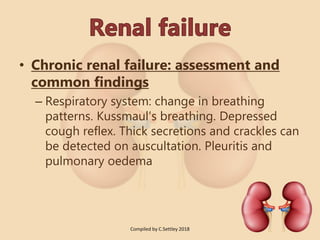The document provides an overview of kidney function, including their role in filtering blood, regulating electrolytes, and excreting waste. It discusses the structure of kidneys, the nephron's filtering process, hormonal regulation (such as ADH and aldosterone), and the pathophysiology of various kidney diseases. Diagnostic methods like ultrasound, CT scans, and biopsies for assessing kidney conditions are also outlined.




















































































